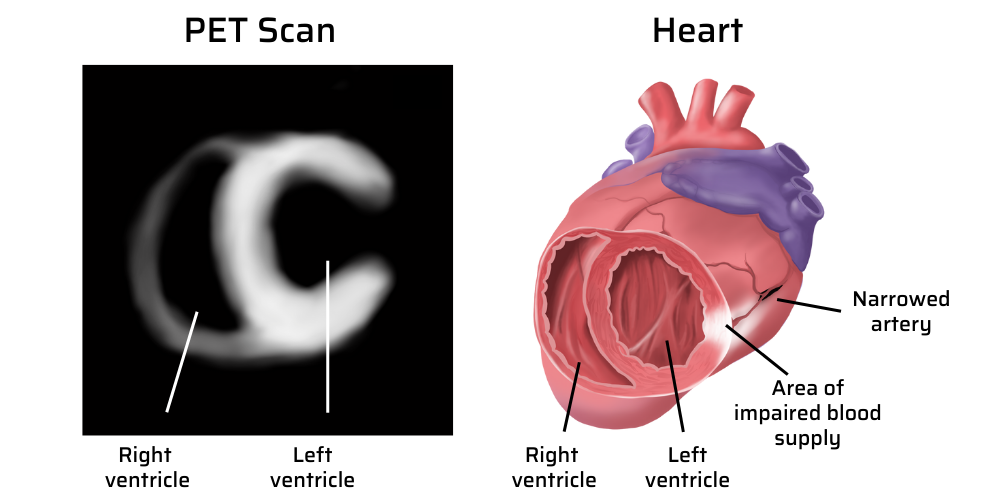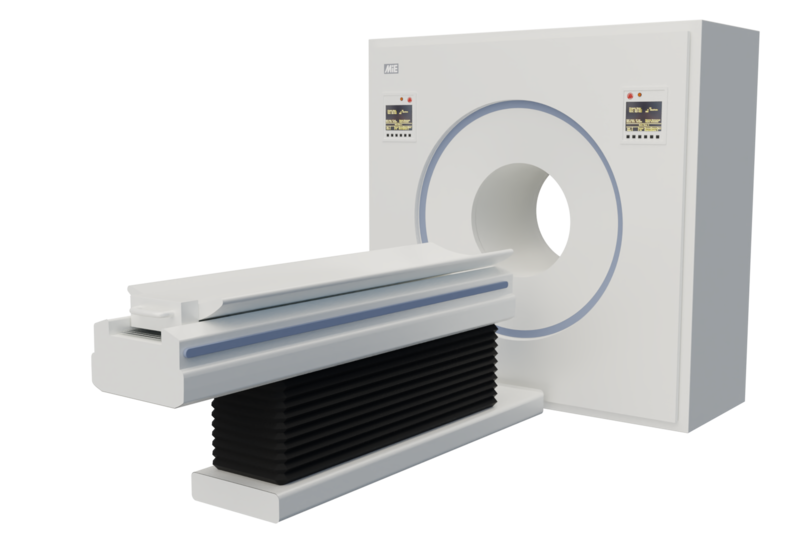Services
We offer state-of-the-art non-invasive cardiac imaging using Positron Emission Tomography.
What to Expect
Detailed Scanning
Non-invasive state-of-the-art imaging
Quality Care
25+ years of experience
Fast Service
Results within a week
How to Prepare for your
Cardiac PET Scan
- No food or drink within 4 hours of your appointment, however you can drink plain water
- No caffeine within 24 hours before your exam
- No use of tobacco or any other nicotine product before your appointment
- Talk to your Dr. about going off Beta Blockers for 48 hours before your appointment
- Talk to your Dr. about going off Calium Channel Blockers 24 hours before your appointment
- If you use an inhaler for asthma please bring it with you
- Do Not apply creams, lotions, or powders to your chest area the day of your exam
- If you have any questions about the medications your taking or the exam please consult your physician for clarification

PET Technology
A PET scan of the heart is a noninvasive nuclear imaging test. It uses radioactive tracers (called radionuclides) to produce pictures of your heart. Doctors use cardiac PET scans to diagnose coronary artery disease (CAD) and damage due to a heart attack. PET scans can show healthy and damaged heart muscle. Doctors also use PET scans to help find out if you will benefit from a percutaneous coronary intervention (PCI) such as angioplasty and stenting, coronary artery bypass surgery (CABG) or another procedure.
Quick Facts
- PET scans use radioactive material called tracers. Tracers mix with your blood and are taken up by your heart muscle.
- A special “gamma” detector that circles the chest picks up signals from the tracer. A computer converts the signals into pictures of your heart at work.
- A PET scan shows if your heart is getting enough blood or if blood flow is reduced because of narrowed arteries. It also shows dead cells (scars) from a prior heart attack.
- A PET scan can help in determining if you’ll benefit from a cardiac procedure (PCI) or surgery to restore blood flow. The tracers used for PET scans can help identify injured but still living (viable)

Why You Might Need a Cardiac PET
Your doctor may recommend you have a heat PET, in order to diagnose heart disease or a result of being diagnosed with abnormal heart rhythms. It’s also used to monitor the progression of coronary artery disease or to access damage of a heart attack, since the test details both healthy areas of the heart and damaged areas.
Physicians utilize the results of a cardiac PET to determine if you will benefit from cardio invention procedures, such as stenting, angioplasty, or coronary artery bypass surgery.
This type of cardiac scan can tell your physician if your heart is getting enough blood flow or if it is reduced as a result of narrowed arteries. It can also show the cardiologist if there are dead cells from a previous heart attack.
Because the cardiac positron emission tomography is so accurate, it can help your doctor determined if you have any injured, but still viable heart muscle that could be saved when blood flow is restored.
Are There Risks to the Procedure?
There is a small amount of radiation that is utilized in the procedure. However, most people are able to rid their body of it within 24 hours through the kidneys. If your nursing, pregnant, or believe you might be pregnant, it’s important to let your doctor know before having the test.
What Happens During the Test?
Your technologist will place electrodes on various areas of your body, such as your legs, arms, and chest. You’ll also have an IV (intravenous live) placed in your arm, which is where the tracer is injected. You’ll lie flat on a table that is connected to a computer and a scanner. The table will slide in and out of a giant doughnut-shaped machine.
Several scans will be done to take multiple pictures of your heart, including from various angles. You’ll need to hold completely still while each scan is being performed. Once baseline images are taken, which can take 15-20 minutes. the tracer will be injected. Then, your heart will then be scanned again.
All-in-all, the test takes about 45 minutes to 1 hour.
What Happens After the Test?
You can go about your normal activities after your heart PET. Plan to wait in the waiting room for 10-15 minutes after your test is complete and you may be encouraged to consume caffeine while you wait as this will help with any residual symptoms you may have from the medications given during the test. You should drink plenty of water within the next 24 hours. This helps to flush out the tracer from your system. You can follow up with your referring physician for results in approximately 1 week.

Have an appointment Scheduled?
Once you have your appointment scheduled it’s important to have the information you need to prepare for your cardiac PET Scan. To learn more about the next steps click the button below.
